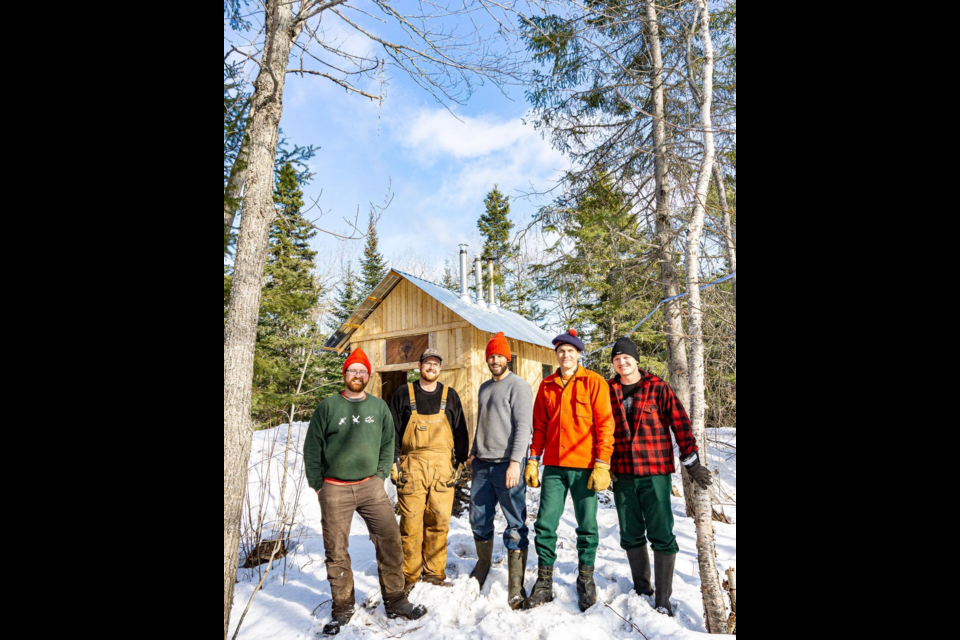The Nor’wester Maple Company’s stand of about 1,400 maple trees is barely enough to feed Thunder Bay. The trees are located in a fairly inaccessible forest in Neebing near Cloud Lake, and about a quarter of the maple trees are red maple, and three quarters are sugar maple.
The five owners, Sean Murray, David Bates, Cale Leeson, Abe Zettek and Aaron Keffer have their work cut out for them when tapping season comes around. The 1,400 trees are tapped and connected to a network of pipelines totalling 30,000 or 40,000 feet. “It’s not little buckets on trees anymore,” Murray says, “the sap drips down the line, gravity takes that sap downhill into our collection tanks.”
Because the sap can go bad if left too long in the tanks, the five try to process the collected sap the following day. “If it’s too hot, you have to do it the same day,” Murray adds. “We did that this year, because it was +20 and blazing sunny.”
Making maple syrup involves long days of work for the team, because each of those 1,400 trees can produce a gallon of sap a day.
A reverse osmosis machine separates the sugars from pure water, getting rid of 75 per cent of the water before the team starts boiling in large stainless steel pans, using firewood.
The company’s syrup is sold at a few locations around town such as the Cheese Encounter and George’s Market and Celebrations, in 250 ml glass bottles. The company says all of its maple syrup is consumed locally every year, and there isn’t enough to ship outside of the region.
Murray started a sister company, Canada West Maple Products, to buy maple syrup from other Northern Ontario syrup producers. Canada West’s syrup is a “big blend of three of the best Northern Ontario producers,” Murray says, and being the farthest west maple product company in Canada, has set its sights on exporting to western Canada and international markets.
This year was not a good year, says Murray. “A perfect tap day is -5 at night and sunny and +5 during the day,” he explains. “The freezing and thawing makes the trunk expand and contract. That’s what drives the sap up from the roots.”
The warm weather arrived very early in March, with temperatures up to +20 degrees in the sun. Nighttime temps didn’t go down enough to freeze the warm trees. Murray figures this year’s harvest is around 800 litres, which is about 75 per cent of what he would like to see, but he says other maple syrup producing regions have fared even worse this year.
This year also saw a greater range of grades, according to Murray. The grade is influenced by how much active yeast is in the forest air. As it gets warmer, yeast activity increases, and the yeast digests the sap’s sucrose and turns it into inverted sugar (fructose and glucose.) Fructose caramelizes easily, resulting in a maple syrup with a darker colour and the classic maple taste.
“We made a huge range of different grades this year,” Murray says. Most years, the bulk of Nor’wester Maple Company’s syrup is amber, but this year, there is grade A golden, grade A amber and grade A dark. They even had some that was as dark as molasses, “you can’t see through it,” he says.
“The very dark, we’ll keep it for our restaurant clients. It’s intense, it’s too much for pancakes,” says Murray. The darkest syrup is highly in demand for cooking, he explains, where the maple syrup needs to compete with other strong flavours, such as in a BBQ sauce.
His personal preference is “an amber that’s closer to the dark,” he says. “Every grade of syrup, you can do different things with it. Maple syrup can be so many different things.”



